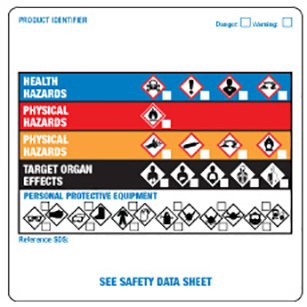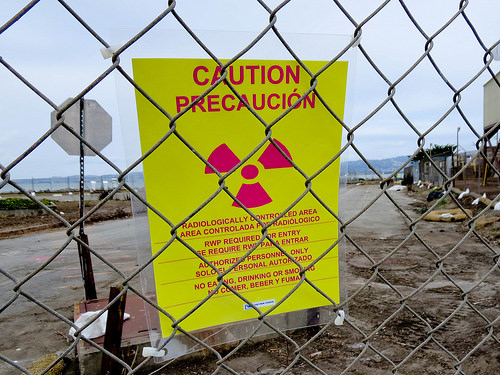Section 404 of the Clean Water Act (CWA) authorizes the U.S. Army Corps of Engineers (Corps) to regulate the “discharge” of “dredged material” or “fill material” into “navigable waters.” Section 404 provision applies if someone wants to dredge a waterway, put fill (or a constructed feature such as a pier or berm) into a waterway, or fill a wetland that occupies a waterway, if that waterway is regulated by CWA as a “water of the United States.” That definition is subject to extreme controversy at the moment – several U.S. Supreme Court decisions struck down a century of agency interpretations, which the Corps and the Environmental Protection Agency (EPA) sought to readjust by changing rules that have now been stayed pending litigation that’s certain to reach the Supreme Court again (I blogged about the rules here).
Read MoreAudit, Compliance and Risk Blog
Supreme Court Decides When Corps of Engineers’ Jurisdictional Determinations are “Final” and Appealable
Posted by Jon Elliott on Tue, Jul 05, 2016
Tags: Environmental risks, Environmental, EPA, Hazcom, effluent
Applying A Hierarchy of Controls to Increase Workplace Safety
Posted by Jon Elliott on Tue, Jun 28, 2016
Every workplace poses at least some potential hazards to workers, but every set of hazards is unique. To effectively identify and manage those hazards, an organization should apply logical and systematic approaches. A number of related approaches are available. A few months ago I blogged about a proposal by the Occupational Safety and Health Administration (OSHA) to revise the Safety and Health Program Management Guidelines it promulgated back in 1989 (click here) – comments were due in February and OSHA is considering what to do next. OSHA’s proposal focused on overall program design, so included important structural considerations – who’s in charge, how are expectations communicated, etc.
Read MoreTags: Employer Best Practices, Health & Safety, OSHA, Employee Rights, EHS
Paris Agreement On Climate Change Calls For Action By Non-National Entities
Posted by Jon Elliott on Tue, Jun 21, 2016
Last December, representatives of 195 countries agreed to continue to expand global efforts to combat climate change. The new Paris Agreement breaks a longstanding impasse with a clever mixture of multinational agreements and agreements-to-agree. I summarized its provisions (and the history of the United Nations Framework Convention on Climate Change (Framework Convention) it modifies) here.
Read MoreTags: Health & Safety, EHS, Greenhouse Gas, ghg, climate change, global
OSHA Requiring Employers to Submit Injury and Illness information
Posted by Jon Elliott on Tue, Jun 14, 2016
The Occupational Safety and Health Administration (OSHA) requires most employers to prepare and maintain records of occupational injuries and illnesses as they occur (I&I Logs). OSHA also requires employers to post an annual I&I Summary in each “establishment” within their workplaces by February 1, summarizing that workplace’s I&Is during the previous calendar year. Delegated state-run programs impose comparable requirements. (I summarized these requirements here). Most of this information remains with employers and their employees, so it never gets used for analyses of workplace trends or to help OSHA evaluate areas where additional regulations might be most helpful.
Tags: Employer Best Practices, Health & Safety, OSHA, Employee Rights
STC Webinar: ISO 14001:2015 – Challenges for the Transition
Posted by Melanie Powers on Tue, Jun 07, 2016
The long awaited ISO 14001: 2015 standard is here. The 2015 standard follows a new format and requires organizations to redefine some key planning and implementation aspects of their environmental management system.
Read MoreMost of the laws and regulations discussed in these blogs exist to ensure proper management of hazardous chemicals and products, in ways designed to minimize environmental and human exposures. Pesticide management provides important variations on these themes, since pesticides are used for the very purpose of killing targeted organisms in the environment … and are regulated to target those uses to protect humans and other non-target species. Within the United States, the Federal Insecticide, Fungicide and Rodenticide Act (FIFRA) provides the national framework for regulation of pesticides, including registration of active ingredients and mixtures, licensing of applicators, and requirements for the application and use of these hazardous materials. FIFRA provides the U.S. Environmental Protection Agency (EPA) with overall responsibility, although different elements of pesticide regulation are subject to different balances of federal (EPA) and state control.
Read MoreTags: Health & Safety, OSHA, EHS, EPA, Hazcom
Every place on Earth has at least a little radioactivity. It is found in bodies, food (not just in industrially irradiated food), the ground, and in many consumer products. The sun and outer space are sources of radiation. Radioactive materials prevalent in nature, such as those present in soils and rock formations and in the water that comes into contact with them, are called naturally occurring radioactive materials, or NORM. NORM typically does not present a problem to human health or the environment, as the radiation levels are very small, and there is generally not an exposure pathway. However, NORM can become concentrated as the result of certain human activities that also expose people and the environment to radiation hazards. Over time, this collection of individual concentrations/exposures has come to be regarded as part of a single, larger, and more complex problem—radiation contamination—referred to as TENORM (tee-norm).
Tags: Audit Standards, Health & Safety, Environmental risks, Environmental, EHS
The first significant outbreak of the mosquito-borne zika virus in the Americas was announced in Brazil in May 2015. Public health officials in the United States began to prepare responses, and have accelerated efforts in reaction to reports that the virus is spreading into U.S. territories, beginning with Puerto Rico and Florida and expanding northward. Late in April, the Occupational Safety and Health Administration (OSHA) and the National Institute for Occupational Safety and Health (NIOSH) entered the fray, by issuing joint “Interim Guidance for Protecting Workers from Occupational Exposure to Zika Virus.” The rest of this note summarizes that Guidance.
Read MoreTags: Employer Best Practices, Health & Safety, Employee Rights, EHS
The Occupational Safety and Health Administration (OSHA) requires employers to protect their employees against possible exposure to “bloodborne pathogens (BBPs).” OSHA’s Bloodborne Pathogen Standard prescribes protections for workers occupationally exposed to blood or other potentially infectious materials (OPIM). Healthcare workers are the most obvious beneficiaries, but emergency responders and others may also be regularly at risk to these exposures.
Read MoreTags: Employer Best Practices, Health & Safety, OSHA, Employee Rights, Environmental risks, EHS, Hazcom, pharmaceuticals
Employee Suspension: A Legitimate Disciplinary Measure?
Posted by STP Editorial Team on Thu, May 05, 2016
 If you are an employer and are considering using suspension as a disciplinary measure, be aware that the Supreme Court of Canada has indicated that employers do not have unfettered authority to withhold work from their employees and that legitimate business reasons must be shown in the context of any administrative suspension. Absent such reasons, an administrative suspension—even with pay—may be found to be a constructive dismissal.
If you are an employer and are considering using suspension as a disciplinary measure, be aware that the Supreme Court of Canada has indicated that employers do not have unfettered authority to withhold work from their employees and that legitimate business reasons must be shown in the context of any administrative suspension. Absent such reasons, an administrative suspension—even with pay—may be found to be a constructive dismissal.
Tags: Business & Legal, Employer Best Practices, Employee Rights, Canadian









